Publications
Selected Publications
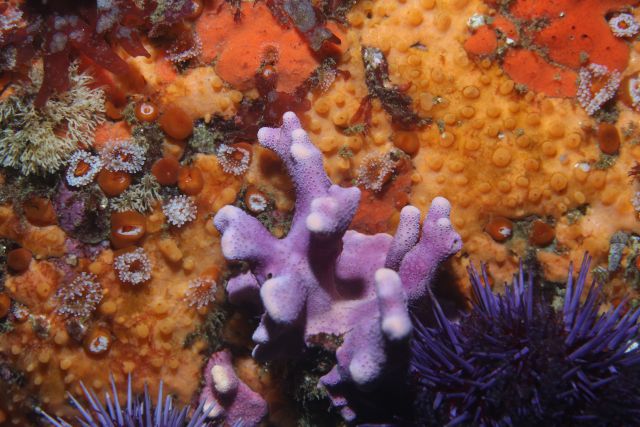
The Sponges of the Carmel Pinnacles Marine Protected Area
California's network of marine protected areas was created to protect the diversity and abundance of native marine life, but the status of some taxa is very poorly known. Here we describe the sponges from the Carmel Pinnacles State Marine Reserve, as assessed by a SCUBA-based survey in shallow waters. Of the 29 sponge species documented, 12 (41%) of them were previously unknown. Using a combination of underwater photography, DNA sequencing, and morphological taxonomy, we greatly improve our understanding of the status and distribution of previously described species and formally describe the 12 new species and one new genus; an additional species, Lissodendoryx topsenti (de Laubenfels 1930), is moved to Hemimycale, and H. polyboletus comb. nov., nom. nov. is created due to preoccupation by H. topsenti (Burton, 1929). Several of the new species appear to be rare and/or have very restricted distributions, as they were not found at comparative survey sites outside of Carmel Bay. These results illustrate the potential of qualitative presence/ absence systematic surveys of understudied taxa to discover and document substantial novel diversity.
These discoveries were made possible through collaboration with Monterey Bay National Marine Sanctuary, are part of an ongiong research project to discover, document, and understand the marine diversity in California. It woulc not have been possible without the continued help of the amazing people and resources in the Ecology, Evolution, and Marine Biology Department at UCSB and the Santa Barbara Coast Long-Term Ecological Research Station.
Preprint available without paywall here
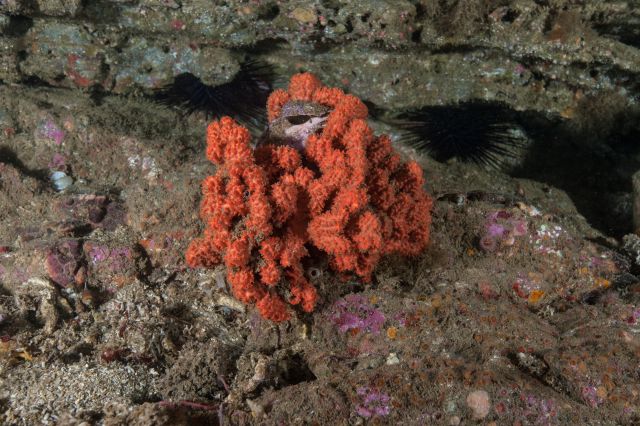
The order Axinellida (Porifera: Demospongiae) in California
We combined our fresh collections with museum vouchers to revise the order Axinellida for California. Seven new species were described: Endectyon (Endectyon) hispitumulus, Eurypon curvoclavus, Aulospongus viridans, Aulospongus lajollaensis, Halicnemia litorea, Halicnemia montereyensis, and Halicnemia weltoni. One new combination is also described, and two existing species are reduced to junior synonyms, resulting in a total of 13 species; a dichotomous key to differentiate them was provided. DNA data from 9 of the 13 species is combined with publicly available data to produce updated global phylogenies for the order.
These discoveries are part of an ongiong research project to discover, document, and understand the marine diversity in Southern California: the SCB Marine Biodiveristy Observation Network, based at UCSB and directed by Bob Miller.
It was made possible by the amazing people and resources in the Ecology, Evolution, and Marine Biology Department at UCSB and the Santa Barbara Coast Long-Term Ecological Research Station.
Preprint available without paywall here
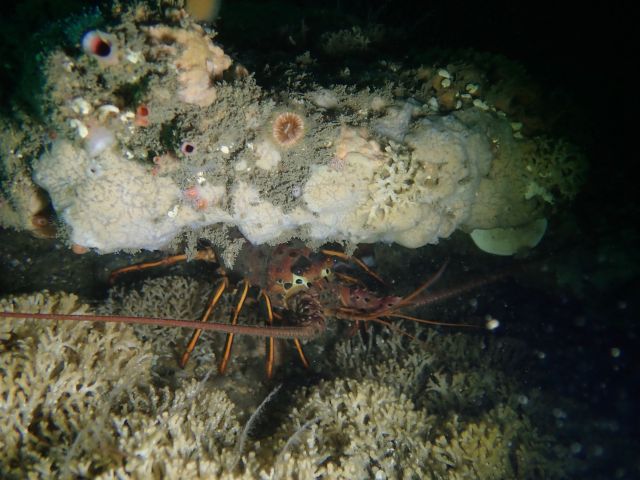
Four new Scopalina from California: the first Scopalinida from the temperate Eastern Pacific
The Scopalinida are an anciently-diverging group: the sister to all other marine sponges in the Subclass Heteroscleromorpha. Only 20 species were previously known: all from warm waters, except a couple species the Faukland Islands. So, I was surprised to find four of them in California! Most work on sponges in California has focused on the intertidal zone or the deep ocean. I've been searching for sponges in the kelp forest while diving, and have discovered that there is an impressive amount of sponge diversity that remains unknown to science.
All four of the newly discovered species are found in the shallow waters right off Santa Barbara. Two are common and widespread, likely occurring throughout the Southern California region. I named one of these species for the character Nausicaä, from the 1984 Miyazaki movie Nausicaä and the Valley of the Wind. The sponge reminded me of some of the fanciful inhabitants of the "toxic jungle", in this film about humanities place in nature. The other two species appear to be rare: one was found only at Naples Reef, and was named for the Chumash settlement of Kuyamu that once stood onshore at that location. The other was found at Elwood Reef, and was named for the town of Goleta.
These discoveries are part of an ongiong research project to discover, document, and understand the marine diversity in Southern California: the SCB Marine Biodiveristy Observation Network, based at UCSB and directed by Bob Miller.
It was made possible by the amazing people and resources in the Ecology, Evolution, and Marine Biology Department at UCSB and the Santa Barbara Coast Long-Term Ecological Research Station.
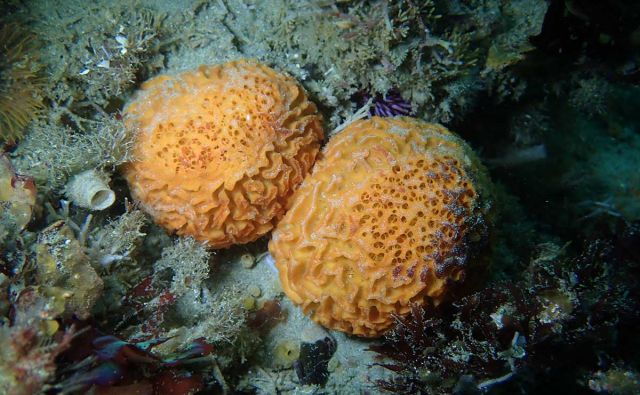
The order Tethyida (Porifera) in California: taxonomy, systematics, and the first member of the family Hemiasterellidae in the Eastern Pacific
If you dive in California, you probably recognize this sponge. They are abundant and ubiquitous (and probably ecologically important) But what species is it? This was previously unclear, as several species had been described, and no genetic work had been done. They all grow as rough spheres, but there is enough variation to make you suspect there are multiple species. In a new paper, I show that all orange puffball sponges in California are one species, Tethya californiana, which will make it much easier to use monitoring data to understand their population biology. I also describe a new species, the Gaviota galaxy sponge. In the immortal words of John Prine: weren't much to look at. But if you take a closer look (with SEM), there is an amazing diversity of tiny star-shaped glass spicules hidden within. This sponge is so unique I had to create a new genus to house it. It is the first member of the family Hemiasterellidae known from the entire Eastern Pacific!Despite lots of looking, I have only found this new species at a single location: Arroyo Quemado Reef, on the Gaviota Coast, at one of the long-term study sites of the Santa Barbara Coast Long-Term Ecological Research project. It is cool to know there are sponges, which are totally unknown to science, just laying around in shallow water, right off UC Santa Barbara! You don't have to go into the deep ocean to find something new.
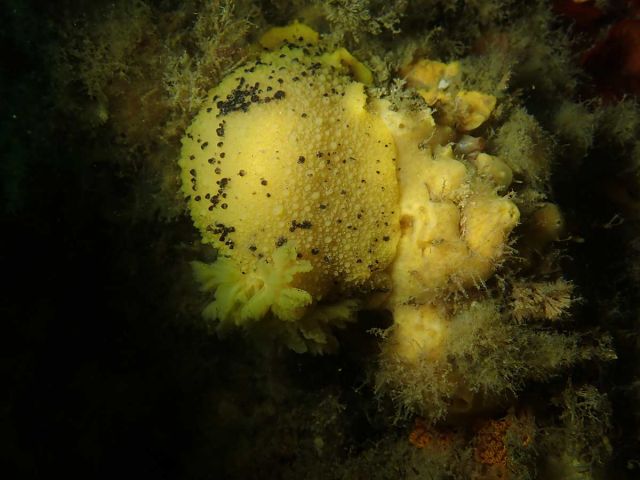
The marine sponge Hymeniacidon perlevis is a globally-distributed invasive species
One of the most common sponges in Europe, Hymeniacidon perlevis was known to have an impressive niche: from muddy estuaries to exposed rocky habitat, from intertidal to subtidal, from the North Sea to the Cape Verde Islands. What was not previously known was that an invasive sponge in Californian estuaries was this same species. I also discovered it is common in Southern Californian kelp forests. Combining my data with genetic data from many previous studies, I showed that this same species occurs all over Europe, the Atlantic coasts of North and South America, the Pacific coast of North America, Japan, Korea, and China! It is suspected to occur in other places as well, including Southern Africa and Pacific South America, and might be the first invasive known in Antartica -- but we need DNA data to confirm. That such a common and widespread sponge could be so poorly known illustrates how much is left to discover about sponges, even in relatively well-studied habitats like Southern Californian kelp forest.